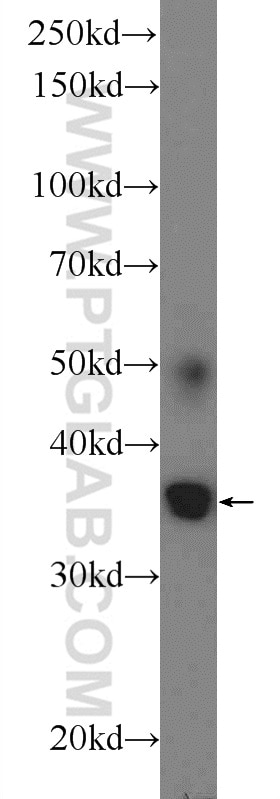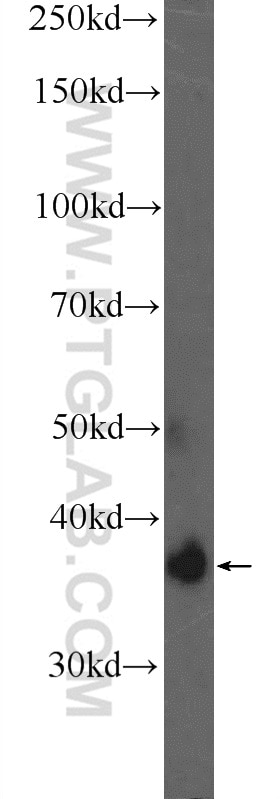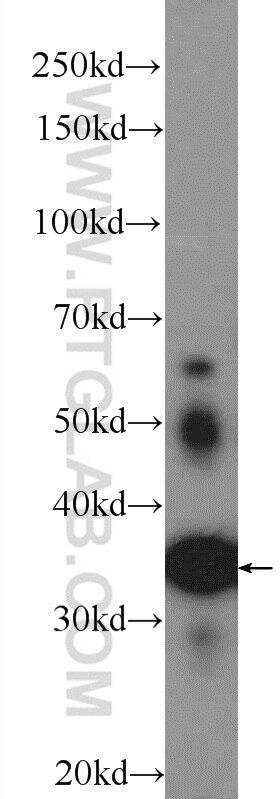Tested Applications
| Positive WB detected in | mouse brain tissue, HEK-293 cells, mouse kidney tissue |
Recommended dilution
| Application | Dilution |
|---|---|
| Western Blot (WB) | WB : 1:200-1:1000 |
| It is recommended that this reagent should be titrated in each testing system to obtain optimal results. | |
| Sample-dependent, Check data in validation data gallery. | |
Product Information
25548-1-AP targets ATRAID in WB, ELISA applications and shows reactivity with human, mouse samples.
| Tested Reactivity | human, mouse |
| Host / Isotype | Rabbit / IgG |
| Class | Polyclonal |
| Type | Antibody |
| Immunogen |
CatNo: Ag22168 Product name: Recombinant human C2orf28 protein Source: e coli.-derived, PGEX-4T Tag: GST Domain: 1-140 aa of BC035850 Sequence: MLHARCCLNQKGTILGLDLQNCSLEDPGPNFHQAHTTVIIDLQANPLKGDLANTFRGFTQLQTLILPQHVNCPGGINAWNTITSYIDNQICQGQKNLCNNTGDPEMCPENGSCVPDGPGLLQCVCADGFHGYKCMRQGSF Predict reactive species |
| Full Name | chromosome 2 open reading frame 28 |
| Calculated Molecular Weight | 229 aa, 25 kDa |
| Observed Molecular Weight | 28-35 kDa |
| GenBank Accession Number | BC035850 |
| Gene Symbol | ATRAID |
| Gene ID (NCBI) | 51374 |
| RRID | AB_2880128 |
| Conjugate | Unconjugated |
| Form | Liquid |
| Purification Method | Antigen affinity purification |
| UNIPROT ID | Q6UW56 |
| Storage Buffer | PBS with 0.02% sodium azide and 50% glycerol, pH 7.3. |
| Storage Conditions | Store at -20°C. Stable for one year after shipment. Aliquoting is unnecessary for -20oC storage. 20ul sizes contain 0.1% BSA. |
Background Information
ATRAID, also named as APR3, p18, C2orf28, promotes osteoblast cell differentiation and terminal mineralization. It plays a role in inducing the cell cycle arrest via inhibiting CCND1 expression in all-trans-retinoic acid (ATRA) signal pathway. This antibody recognizes all the three isoforms (20-24 kDa, 16-19 kDa and 28-30 kDa).
Protocols
| Product Specific Protocols | |
|---|---|
| WB protocol for ATRAID antibody 25548-1-AP | Download protocol |
| Standard Protocols | |
|---|---|
| Click here to view our Standard Protocols |








